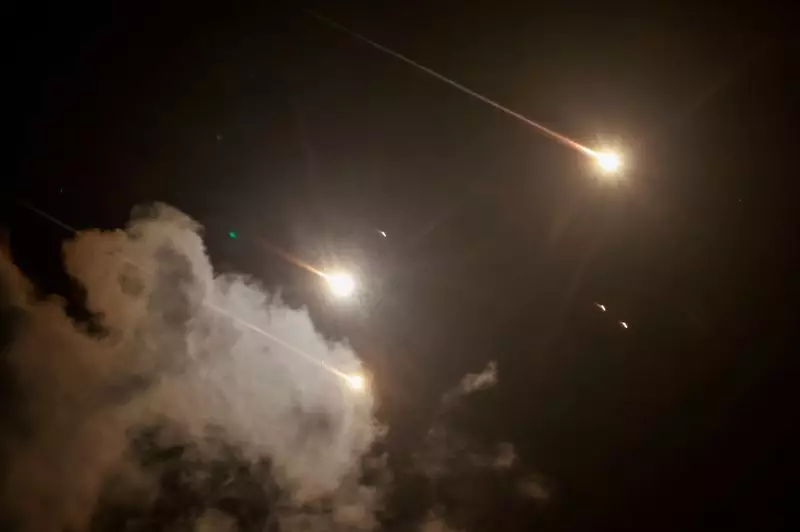Recent missile strikes by Iran against Israel have reignited discussions around missile defense systems and their efficacy, particularly in the context of potential conflicts involving major powers such as the United States and China in the Indo-Pacific region. The volley of approximately 400 missiles launched by Iran this year serves as a critical case study for both offensive capabilities and defensive strategies. This article explores the key lessons learned from these attacks, the limitations of current missile defense systems, and their implications for deterrence policies in the face of evolving military challenges.
Iran’s recent missile barrages provide the U.S. and its allies with invaluable data regarding missile defense performance against large-scale offensive operations. Collin Koh from the S. Rajaratnam School of International Studies highlights that while these attacks underline the potential for missile defenses to intercept incoming threats, they also reveal significant gaps in doctrine. The U.S. must recognize that adversaries like China may possess missiles that are inherently more difficult to intercept, suggesting that a balance between deterrence via defensive technology and retaliatory capabilities must be maintained. Koh’s observation—that “deterrence by punishment” may need to be prioritized over reliance on deterrence through denial—poses an important shift in military strategy that could guide future defense investments.
Furthermore, the differences in geography and missile technology between the Middle East and the Indo-Pacific region are stark. The distances involved in a potential conflict with China drastically exceed those seen in Israel, complicating missile defense in terms of response time and operational effectiveness. The case of Israel’s defense systems, including the Iron Dome and Arrow, reveals a tailored approach to localized threats from neighboring nations. In contrast, the U.S. may need to develop more sophisticated systems capable of addressing the multifaceted challenges presented by China’s advanced missile technologies, including precision-guided munitions and maneuverable warheads.
The analytical lens provided by the Iranian missile attacks also opens discussions about the importance of intelligence in anticipating the outcomes of missile engagements. Ankit Panda from the Carnegie Endowment for International Peace asserts that understanding the performance of missile defense systems could potentially avert conflict. This suggests a vital need for transparency in missile defense capabilities among nations, which can foster a better understanding of the threat landscape and potentially reduce the chance of miscalculation leading to escalation.
However, while gathering intelligence is fundamental, uncertainty surrounding the performance of missile systems remains problematic. A military force engaging in long-range missile strikes must account for the prospective effectiveness of adversary missile defenses. Any ambiguity regarding the expected performance of such defense systems can lead to significantly heightened tensions, as adversaries may overestimate their offensive capabilities.
The technological competition between China and the U.S. in the realm of missile defense and offense is becoming increasingly pronounced. With China reportedly possessing hundreds of intermediate-range ballistic missiles like the DF-26 and DF-21, the range and accuracy of its arsenal present formidable challenges for U.S. forces in the Indo-Pacific. These missiles, capable of striking strategic U.S. locations such as Guam, underline the need for advanced air and missile defense systems.
In contrast, Iran’s missile capabilities, while numerically significant, are shorter-ranged and may not possess the same level of precision. Both nations have taken distinctive approaches to their missile technology, and as Malcolm Davis from the Australian Strategic Policy Institute points out, a potential mass missile strike orchestrated by China would be significantly more challenging for existing Western missile defense systems to neutralize. The possible integration of anti-satellite warfare and cyber strategies into missile operations further complicates this dynamic, emphasizing the need for an interconnected defense strategy that accounts for various forms of military engagement.
As the nature of global conflicts evolves, lessons learned from recent missile operations, such as Iran’s strikes against Israel, must inform future defense strategies in the Indo-Pacific theater. While the discussions surrounding deterrence and missile defense are undeniably complex, they are critical for national security. The imperative for the U.S. and its allies is to establish advanced, adaptive defense mechanisms capable of counteracting the shifting paradigms of military threats posed by countries like China, while understanding the strategic lessons inherent in recent conflicts. The ongoing dialogue around missile defense must evolve, placing a premium on bolstered intelligence, collaborative innovation, and comprehensive deterrence strategies to meet the challenges of tomorrow’s battlefield.

